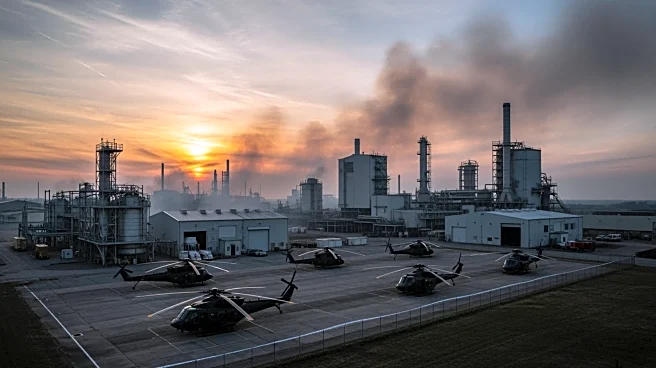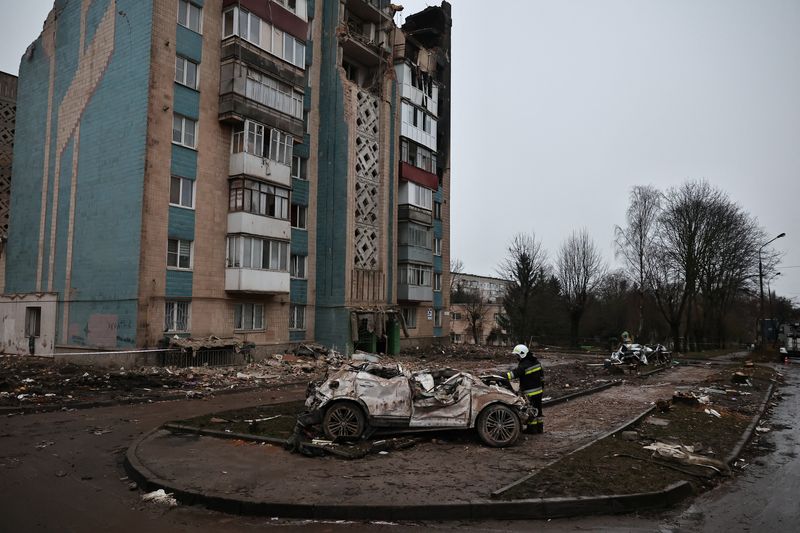What's Happening?
Ukraine has successfully targeted and destroyed two Russian helicopters, a Ka-27 Naval helicopter and an Mi-8, marking significant losses for Russia. The Ka-27, typically used for submarine hunting, was
reportedly engaged in hunting naval drones when it was downed. The Mi-8 was shot down by a guided deep-strike drone 200 kilometers behind Russian lines. Additionally, Ukraine has struck key infrastructure targets, including an electrical substation in Crimea and energy facilities in Donetsk and Krasnodar. These actions are part of Ukraine's ongoing efforts to disrupt Russian military operations and infrastructure. The strikes have also led to power outages in several regions, further impacting Russian capabilities.
Why It's Important?
These strategic strikes by Ukraine highlight the evolving nature of warfare, where drones and precision targeting play a crucial role. The destruction of Russian helicopters and infrastructure not only weakens Russia's military capabilities but also serves as a morale booster for Ukraine. The use of advanced technology, such as guided drones, underscores Ukraine's ability to adapt and innovate in its defense strategies. This development could influence future military tactics and the geopolitical landscape, as Ukraine continues to resist Russian advances. The impact on energy facilities also poses challenges for Russia, potentially affecting civilian life and military logistics.
What's Next?
Ukraine's continued targeting of Russian military assets and infrastructure is likely to provoke further military responses from Russia. The international community may see increased diplomatic efforts to address the conflict, with potential implications for global energy markets and security policies. As Ukraine demonstrates its capability to strike deep within Russian territory, there may be calls for increased support from Western allies to bolster Ukraine's defense capabilities. The situation remains fluid, with potential for escalation or diplomatic resolution depending on the actions of key stakeholders.
Beyond the Headlines
The use of drones and precision strikes in modern warfare raises ethical and legal questions about the conduct of war and the protection of civilian infrastructure. As technology advances, the line between military and civilian targets becomes increasingly blurred, necessitating discussions on international law and warfare ethics. The impact on civilian populations, particularly in regions experiencing power outages, highlights the broader humanitarian implications of the conflict. Long-term, these developments could lead to shifts in military strategy and international relations, as nations reassess their defense capabilities and alliances.














